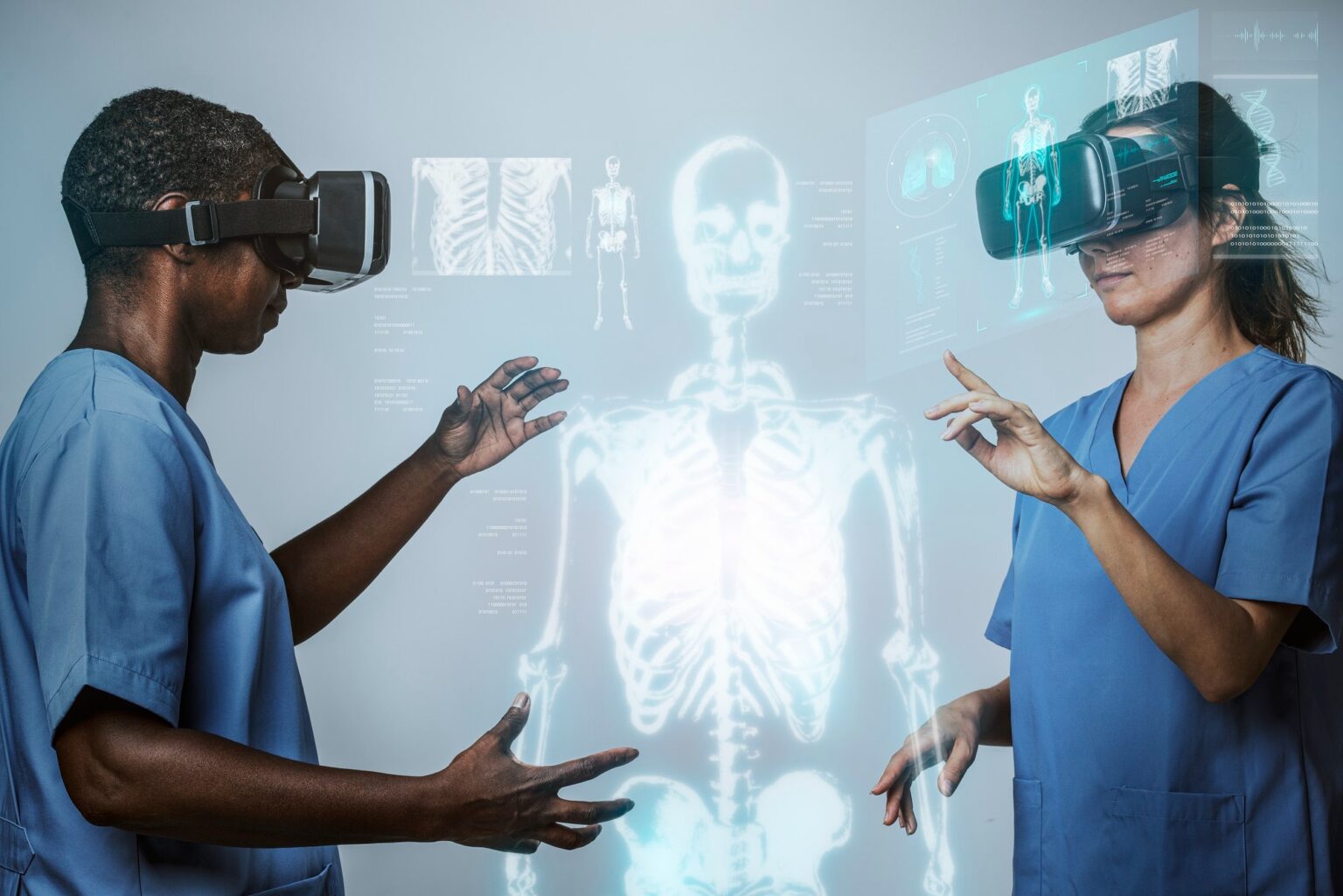Augmented Reality (AR) is revolutionizing medical education by transforming learning environments, simulation training, and surgical planning through immersive visualization technologies. Here’s how AR is reshaping medical education:
Contents
Transforming Learning Environments:
- Interactive Anatomy Learning: AR applications provide interactive 3D models of human anatomy that learners can manipulate, dissect, and explore in real time. This hands-on approach enhances spatial understanding, anatomical knowledge, and surgical proficiency among medical students and healthcare professionals.
- Virtual Anatomy Labs: AR-based virtual anatomy labs replace traditional cadaver dissection with digital simulations, offering scalable, cost-effective, and ethically sustainable alternatives for anatomical education. Learners can practice anatomical identification, surgical techniques, and clinical procedures in a simulated environment without the need for cadaveric specimens.
- Dynamic Case Studies: AR-enabled case studies and clinical scenarios simulate real-world patient encounters, diagnostic challenges, and treatment decisions in immersive virtual environments. Learners engage in problem-solving exercises, differential diagnoses, and evidence-based decision-making, enhancing clinical reasoning and critical thinking skills.
Simulation Training:
- Surgical Simulations: AR-based surgical simulations replicate surgical procedures, patient anatomy, and surgical instruments in virtual reality environments. Surgeons-in-training can practice surgical techniques, instrument manipulation, and tissue dissection in a risk-free, controlled setting, accelerating skill acquisition and proficiency development.
- Procedural Training: AR-enhanced procedural training modules provide step-by-step guidance, visual cues, and haptic feedback to learners performing medical procedures such as central line insertion, lumbar puncture, or airway management. Augmented overlays assist learners in technique mastery, error correction, and competency assessment.
- Team-Based Training: AR facilitates team-based training exercises, interprofessional simulations, and collaborative learning experiences among healthcare teams. Multidisciplinary teams engage in crisis management scenarios, communication skills training, and teamwork dynamics assessments to improve patient safety and clinical outcomes.
Surgical Planning:
- Preoperative Visualization: AR technologies enable preoperative visualization of patient anatomy, pathology, and surgical plans using patient-specific medical imaging data. Surgeons overlay virtual 3D reconstructions onto the patient’s body, enhancing spatial orientation, anatomical understanding, and surgical navigation during complex procedures.
- Intraoperative Guidance: AR-assisted intraoperative guidance provides surgeons with real-time augmented overlays of critical anatomical structures, surgical targets, and instrument trajectories during procedures. Heads-up displays (HUDs) or wearable devices project digital information directly into the surgeon’s field of view, enhancing situational awareness and precision in surgery.
- Precision Medicine: AR supports precision medicine approaches by integrating patient data, genomic information, and treatment algorithms into surgical planning and decision-making processes. Surgeons customize treatment plans, select optimal surgical approaches, and tailor interventions based on individual patient characteristics and disease profiles.
Challenges and Future Directions:
- Integration with Curricula: Integrating AR technologies into medical curricula requires collaboration among educators, technologists, and healthcare providers to develop standardized learning objectives, assessment tools, and competency frameworks. Faculty development programs and educational resources support faculty adoption and implementation of AR-enhanced teaching modalities.
- Technological Infrastructure: Establishing robust technological infrastructure, including AR hardware, software platforms, and network connectivity, is essential for delivering immersive learning experiences in medical education settings. Institutions invest in AR equipment, simulation centers, and IT support to facilitate seamless integration and accessibility of AR tools.
- User Experience Design: Designing intuitive user interfaces, interactive simulations, and immersive learning environments enhances user experience and engagement with AR applications. Human-centered design principles prioritize usability, accessibility, and inclusivity for diverse learner populations, including students, residents, and practicing clinicians.
- Research and Evaluation: Conducting empirical research and outcome evaluations assess the effectiveness, efficiency, and educational impact of AR technologies in medical education. Studies examine learning outcomes, skill acquisition, knowledge retention, and learner satisfaction to inform evidence-based instructional practices and pedagogical innovations.
- Ethical Considerations: Addressing ethical considerations related to patient privacy, data security, and informed consent is paramount in AR-enhanced medical education. Educators adhere to ethical guidelines, professional standards, and institutional policies to safeguard patient confidentiality, mitigate risks, and ensure responsible use of AR technologies in healthcare settings.
In summary, augmented reality is transforming medical education by revolutionizing learning environments, simulation training, and surgical planning through immersive visualization technologies. By integrating AR into medical curricula, enhancing simulation-based training, and advancing surgical decision support systems, educators and healthcare providers are shaping the future of healthcare education and professional development in the digital age.



